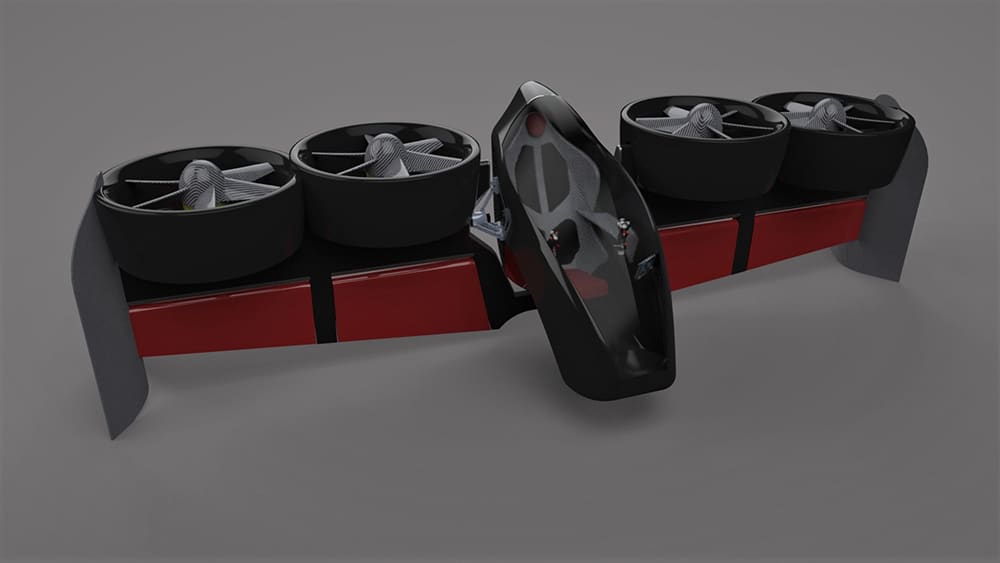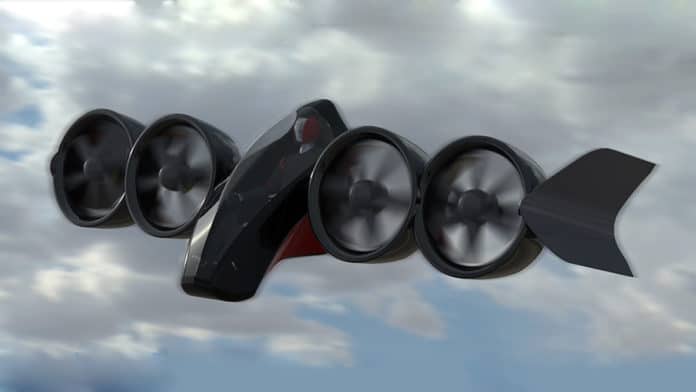Developed by a young Canadian company, the WatFly Atlas is a single-seat electric vertical takeoff and landing (eVTOL) aircraft, which is intended for recreational use and supposed to be marketed from 2021. It has the particularity of using a tail-sitter design, where the device sits vertically on its tail for takeoff and landing when it is on the ground.
The pilot sits in a cockpit whose glass surface offers more than 180-degrees of breathtaking visibility thanks to the canopy wraparound. The single-seat machine is a 4-rotor manned multicopter design, in which all four of its ducted rotors are inline along a single wing. Oriented vertically for takeoff and landing, they pivot horizontally for the actual flight. And so that the pilot does not undergo configuration changes, the cabin is connected by a gimbal system that allows him to keep his sitting position independently of that of the wing.

Created by two students from the University of Waterloo (Canada), Atlas’ strong, stiff carbon fiber structure, which makes it extremely lightweight. There’s also ample legroom and a rear storage area. So your luggage – from golf clubs to skis or snowboards – simply fit. Wherever you decide to go, just keep enjoying the journey while the flight computer handles the controls.
The startup does not reveal many technical details on the Atlas. The machine has a wingspan of 4.6 meters (15 feet) by 2.5 meters (8.2 feet) high and an empty weight of 129 kg. It can fly at a maximum speed of up to 200 km/h (124 mph) and carry about 113 kg of load. Its battery packs recharge in two hours that would allow it to fly for about an hour and hover for about 15 minutes.
Because of its configuration, Atlas is FAA certified as an Ultralight Air Vehicle, meaning you do not need a pilot license to fly it; just need the company‘s tailored training course. The use of the device is limited to leisure activities with the prohibition of flying over dense areas, including cities and villages, as well as certain specific airspaces. Despite the limited information and the difficulty in gauging the viability of the project, WatFly aims to market the Atlas from next year for $150,000.
